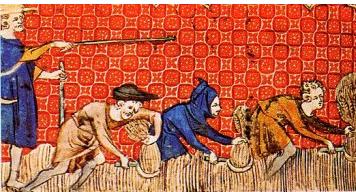ENVIRONMENTAL CHANGES
Evidence from a variety of sources, such as tree rings, ice cores, historical documents, glaciers, geology, suggests that there may have been a period of climatic warming between the ninth and fourteenth centuries, when temperatures were higher than at the start of the 20th century, at least in some parts of Europe.
The Medieval Climate Optimum or Medieval Warm Period was an unusually warm period in history lasting from about the ninth to about the fourteenth century.
During this time wine grapes were grown in Europe up to 300 km north of their present northerly growing limit. Also during this time, the Vikings took advantage of ice-free seas to colonize Greenland and other lands of the far north.
This and the rise of the mercantile class, led to improved diet and greater population growth. By 1300, Europe was significantly overpopulated. This was followed by the so-called Little Ice Age. The resulting climate was colder and wetter than normal. The period of cooling brought bitterly cold winters to many parts of the world, but is most thoroughly documented in Europe.
With population higher than it had been in some time, and crop yields reduced, general health declined.The severe winters affected human life in many ways. Famines became more frequent (the one in 1315 killing 1.5 million people alone), and deaths from disease increased.
